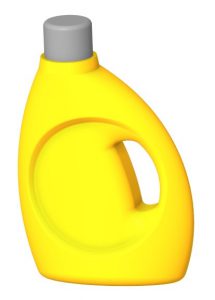Solid Modeling of a Detergent Bottle - Lesson 7
Detergent Bottle
What is a detergent bottle?
A detergent bottle is a plastic container used to store, well... detergents! It is typically made of high-density polyethylene (HDPE), a plastic polymer that is resistant to chemicals, so that the bottle will not react with any of the products it contains. Also, this material makes the bottle usable at a wide range of temperatures. Detergent bottles are colorful and have different shapes, each one unique on its own way. A detergent bottle seems harmless but don’t let your guard down — creating a solid model of it can be extremely challenging! Let’s find out how to model these curved geometries!
Modeling Approach:
Our modeling approach will begin by analyzing the technical drawing and the model’s final shape. Download the technical drawing of this detergent bottle model here. Once we understand its characteristics, we can outline a plan for completing the detergent bottle. We can begin sketching the base and the top shape of the bottle. Then, we can generate the curved guidelines of the sides of the bottle. Next, we create the handle and the central shape of the bottle. Last, we will close the bottle with its cap!
Check out the video below to learn the step-by-step process for creating a model of a detergent bottle using SpaceClaim.
Recap:
In this modeling session you used the Ellipse, Three-Point Arc and Spline tools to sketch the outlines of the detergent bottle shapes. Using the Layout Sketch option, you discovered how to avoid generating a surface once done with sketching. You then learned how to use the Blend tool and the Select Guides option to generate the bottle’s complex curved geometry, maintaining the curves’ tangency. You gained experience on how to use the Plane and the Split tool to decompose the body into smaller sections to complete the geometry piece by piece. You also learned how to use the Fill tool with the Patch fill option to complete complex curved patches.

